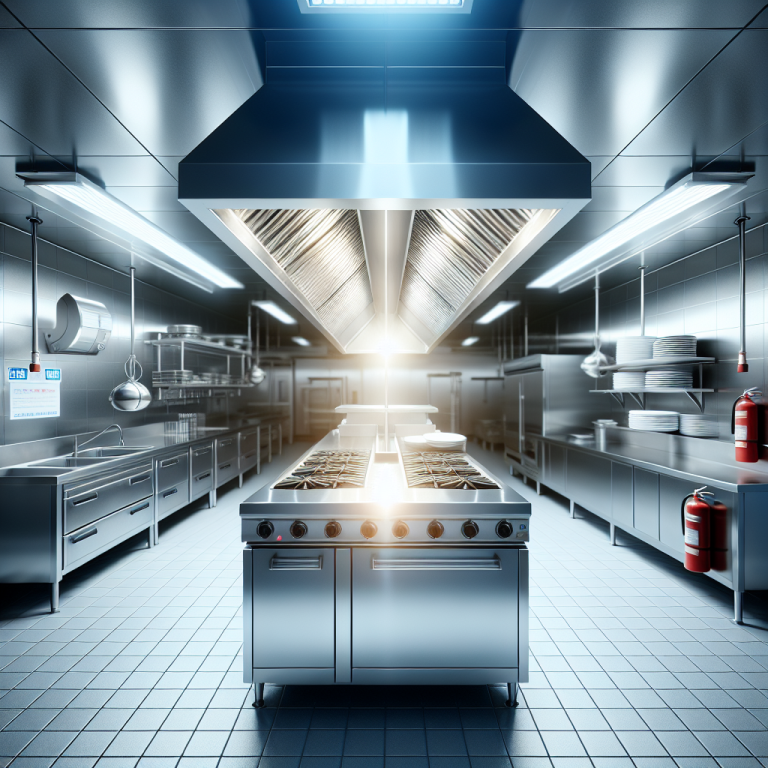Master Hood Cleaning: Key Training Tips for Your Team
Understanding the Essentials of Hood Cleaning for Your Restaurant
The importance of proper hood cleaning in a restaurant cannot be overstated. A clean hood ensures the safety of your kitchen, the health of your staff, and the overall efficiency of your operations. Training your team on proper hood cleaning procedures is crucial in maintaining a clean and safe environment. This article will delve into why hood cleaning is essential, how to train your team effectively, and tips to ensure the job is done right.
The Importance of Hood Cleaning
Hood cleaning plays a pivotal role in the safety and hygiene of commercial kitchens. A restaurant hood collects grease and grime over time, which can pose significant risks if not addressed appropriately. Here are the primary reasons why hood cleaning is critical:
- Fire Safety: Grease buildup in the hood and exhaust system is highly flammable. Regular cleaning reduces the risk of fire outbreaks.
- Health Compliance: A clean hood helps maintain a sanitary kitchen environment, which is crucial for adhering to health regulations and inspections.
- Efficient Ventilation: Effective ventilation reduces smoke and odors, creating a comfortable space for staff and customers.
- Longevity of Equipment: Proper maintenance extends the lifespan of kitchen equipment, saving costs in the long run.
Training Your Team: Steps for Effective Hood Cleaning
Training your team on the correct procedures for restaurant hood cleaning ensures the job is efficient and thorough. Here are essential steps to consider:
1. Understanding the Equipment
Before any cleaning begins, your team must familiarise themselves with the kitchen’s specific hood system. Different systems require distinct approaches, and knowing the equipment details can prevent damage and ensure thorough cleaning.
2. Safety First
Safety is paramount. Equip your team with the necessary safety gear such as gloves, goggles, and masks. Educate them on the potential hazards of handling cleaning chemicals and the importance of precautionary measures.
3. Initial Assessment and Preparation
Before cleaning, perform an initial assessment of the hood system. Identify heavily soiled areas and potential problem spots. Ensure that the power to the exhaust fans is turned off and that all equipment is cool to the touch.
4. Degreasing and Scrubbing
Using approved cleaning agents, your team should begin degreasing the hood. Apply the cleaner to all surfaces and let it sit for the prescribed amount of time before scrubbing. Pay special attention to filters, greasetraps, and ductwork.
5. Rinsing and Drying
After thorough scrubbing, rinse the hood with hot water to remove all cleaning agents and dislodged grease. Ensure all parts are dried properly to prevent rust and maintain sanitation.
6. Reassembling and Inspection
- Reassemble all components carefully.
- Conduct a final inspection to ensure no spots have been missed and everything is functioning correctly.
7. Documentation
Keeping records of each cleaning session can help track maintenance schedules and ensure regulatory compliance. Train your team to document every step meticulously.
Incorporating Technology
Modern cleaning technologies and tools can enhance the efficiency of hood cleaning. Consider investing in steam cleaners and industrial vacuum systems. Training your team on these tools is essential for optimal use.
Regular Training and Updates
The restaurant industry constantly evolves, and so do the best practices for exhaust hood cleaning. Periodic training sessions to update your team on new techniques and safety protocols are vital for maintaining high standards.
Partnering with Professionals
While training your team is crucial, partnering with professional hood cleaning services such as Jersey Hood Cleaning can ensure comprehensive and expert maintenance. Their expertise can complement your team’s efforts, providing a clean and safe kitchen environment.
Conclusion
Training your team on essential hood cleaning knowledge is a significant step towards a safe and efficient kitchen. Proper training not only ensures compliance with health and safety regulations but also promotes a healthy working environment and prolongs the lifespan of your equipment. For expert assistance, consider partnering with Jersey Hood Cleaning, a trusted name in Toms River NJ and across New Jersey. Their professional services can provide peace of mind and ensure your kitchen remains in top condition.







